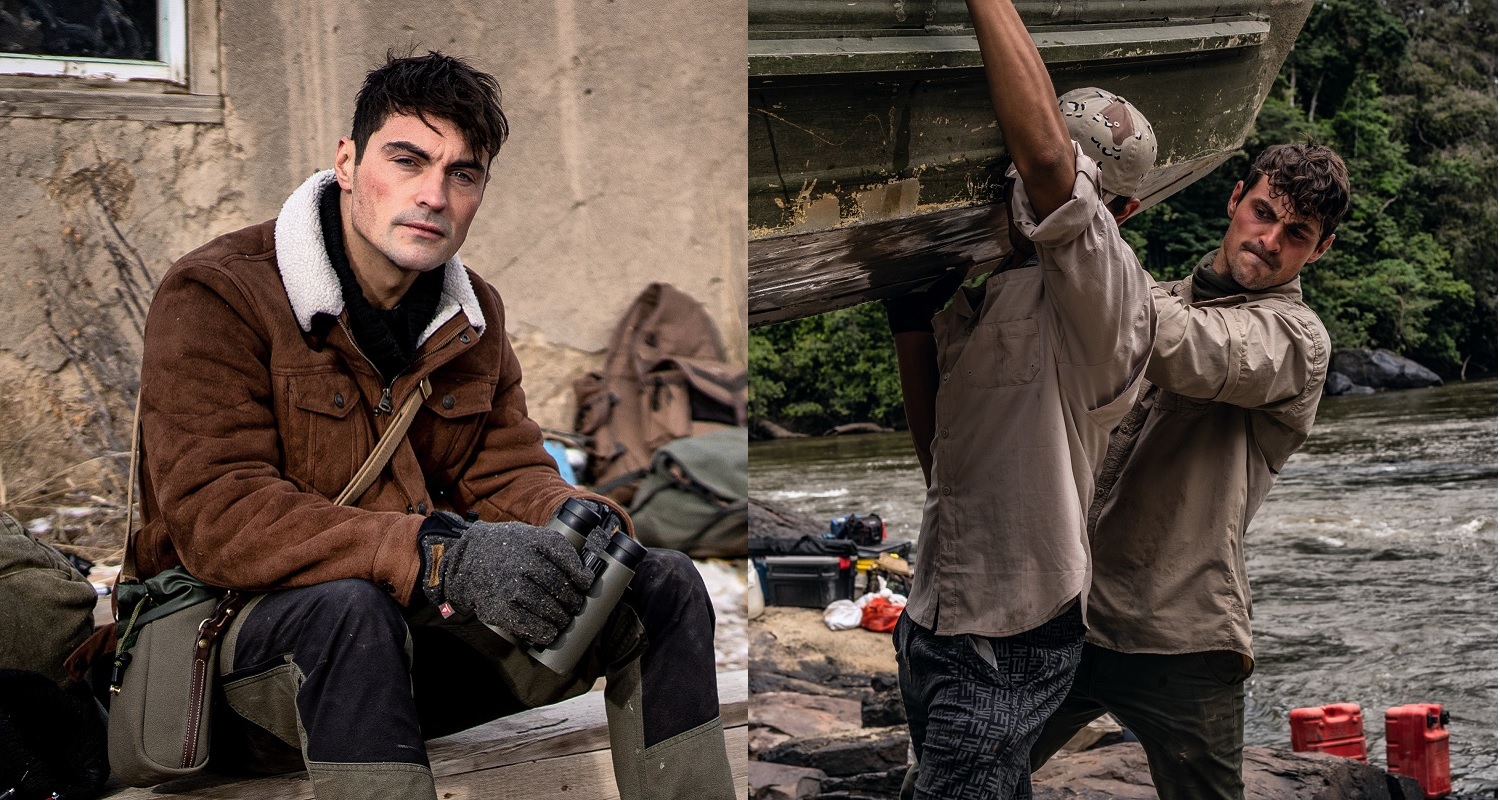10 pictures from wildlife TV presenter Dan O’Neill’s world-conquering photo album
Exclusive: "I don’t know what interests me more, the wildlife and the wild places we visit, or the people that live there," Dan tells us

Words: Jamie Tabberer; photo captions: Dan O’Neill
Wildlife TV presenter Dan O’Neill – a gay man who’s previously spoken of being advised to “play down” his sexuality for work – is kind of what you might call well-travelled.
The rising star, who in April launched BBC show Snow Leopards: Ghosts in the Snow, has visited some of the most far-flung corners of the globe in search of creatures great and small.
Here, the biologist offers Attitude a glimpse into his personal photo album – from bird-watching off the coast of Wales to searching for the world’s largest spider in Brazil.
Sarychat-Etash Reserve, Kyrgyzstan (photo: Chris Beard)

In a recent expedition searching for snow leopards on the Kyrgyzstan-China border, the area was so remote, the only way to traverse the landscape was on semi-wild horses captured by our guides, the local herders.
They were very skittish and jumpy – which made the fact that the nearest hospital being two days’ travel away quite unnerving!
Sarangani Province, Mindanao Island, Philippines (photo: Ben Harris)

In Southeast Asia wandering the winding tunnels of a covered market. Beautiful and full of vibrant colours and interesting scents, there is often a darker side.
Wet markets selling snared bushmeat and live animals for the illegal wildlife trade can also be found hidden in the alleys.
Sarychat-Etash Reserve, Kyrgyzstan (photo: Chris Beard)

Sat at our first cabin in the mountains of Kyrgyzstan with the long lens, searching for snow leopards on the peaks and valleys around us.
Skokolm Island, Pembrokeshire, Wales (photo: Matt Gould)

Taken while staying on Skokolm Island for a week filming puffins, gannets, and other sea birds. The island off the coast of Pembrokeshire is just a bit further than Skomer and is a vitally important breeding site for a myriad of birds.
It is also the place that inspired ‘Watership Down” as the island is overrun by rabbits. Their main predators are great black-backed gulls, which dispatch them and swallow them whole!
The Philippine Eagle Foundation, Davo, Philippines (photo: Ben Harris)

Working with the Philippine Eagle Foundation carrying out checks on the 31 eagles housed at the facility. The checks happen once per year and are very dangerous. The eagles are captured by hand, and as the largest eagle on earth, they can cause serious damage if they get a chance. Many of the workers have grizzly scars.
In the wild, the Philippine eagle is the world’s most critically endangered raptor, with just 400 pairs left across the archipelago.
Rewa River, Guyana (photo: Chris Beard)

Traveling 300 miles into the jungles of Guyana to the headwaters of one of the most remote rivers in the Northern Amazon.
Our mission was to find animals that have never seen people before but in order to do so, we had to traverse several huge waterfalls with all our equipment, including our boats.
Sarychat-Etash Reserve, Kyrgyzstan along the border to China (photo: Chris Beard)

Our last cabin, an old shipping container-like shack with no insulation but the walls of corrugated iron sheeting and a door that was held shut by string.
The rangers told us stories of a bear that once tried to get inside on a previous expedition. What they have dealt with in the past seems a little scary, but is just their way of life.
I’m stood outside with the incredible Kuban Zhumabai-Uulu, founder of the Snow Leopard Foundation in Kyrgyzstan, and the man responsible for keeping this reserve safe from poachers and other illegal activities.
Cat Ba Island, Vietnam (photo: Tom Parry)

Stood in the stunning karst mountain formations of Cat Ba island searching for Asia’s most endangered primate. Along with scientists from the Cat Ba Langur Conservation Project, we headed into the restricted area of the archipelago off the east coast of northern Vietnam in search of the critically endangered langurs, of which there were just 69 left on the planet.
Bringing a whole new meaning to ‘needle in a haystack’, finding them seemed an impossible mission. But at 5:30 am, as the light was coming up, we found the largest troop, and the night before we arrived they had welcomed a new baby to the family, increasing the number to 70 – the highest it had been since the conservation programme started decades ago.
Nothern Amazon Rainforest, Guyana (photo: Chris Beard)

In the Amazon Rainforest with the largest spider in the world, the Goliath bird-eating spider. About the size of a dinner plate, they are actually nocturnal ambush predators, so don’t catch many birds at all, though small mammals are still on the menu.
The giant spiders have venomous fangs over an inch long, but the primary defense against attackers is actually in the form of tiny hairs on their abdomen. They kick them up with their back legs, dislodging them into the air where they get into the throat, eyes, and skin, and are incredibly itchy and unpleasant.
Davao City, Philippines (photo: Ben Harris)

In a little village in the Philippines filming for a documentary. I don’t know what interests me more, the wildlife and wild places of the places we visit, or the people that live there.
For sure the stories that excite and inspire me the most are those that focus on local communities and their relationships with nature.
Follow Dan on Twitter and Instagram.
The Attitude July issue is out now.
Subscribe in print and get your first three issues for just £1 each, or digitally for just over 1.50 per issue.

